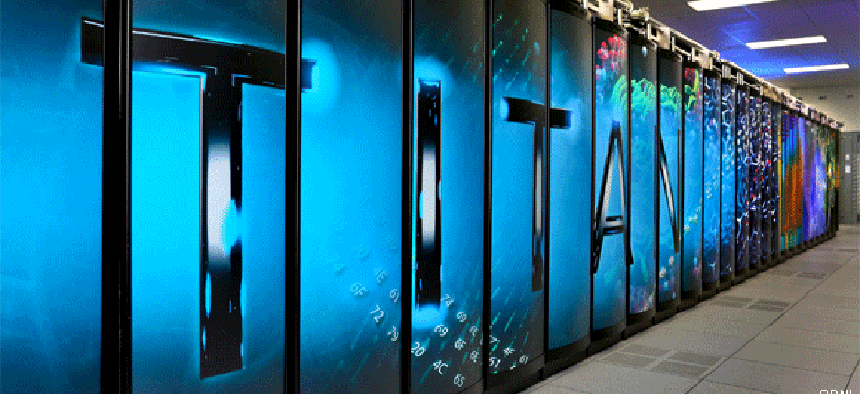Energy's Titan supercomputer goes to 20 (petaflops)

Oak Ridge National Labs' upgrade of Jaguar combines graphical processors with CPUs in a new low-power architecture that boosts performance tenfold.
I at first wondered if the scene the other day at the Energy Department’s Oak Ridge National Laboratory was something like the scene in “National Lampoon’s Christmas Vacation,” when Chevy Chase caused the local power plant to tap into emergency nuclear power when his Christmas lights came on.
That’s because the Oak Ridge crew flipped the switch on Titan, the world’s newest and likely fastest supercomputer. Titan is capable of an amazing 20,000 trillion calculations each second. That’s 20 petaflops if you are up with the lingo.
But it turns out the strain on the local power plant wasn’t anything out of the ordinary, because Oak Ridge designed Titan for relatively low power consumption.
One secret to Titan’s success is that it uses graphical processor units in conjunction with standard processors. The GPUs are familiar to gamers, because they are needed to be able to play bleeding edge titles like Call of Duty. Titan contains 18,688 nodes, with each holding a 16-core AMD Opteron 6274 processor and an NVIDIA Tesla K20 graphics processing unit GPU accelerator. And the 700 terabytes of memory doesn’t hurt matters any.
Combining GPUs and CPUs not only gives Titan its amazing petaflop power, but is also more economical in terms of power use. "One challenge in supercomputers today is power consumption," said Jeff Nichols, associate laboratory director for computing and computational sciences. "Combining GPUs and CPUs in a single system requires less power than CPUs alone and is a responsible move toward lowering our carbon footprint. Titan will provide unprecedented computing power for research in energy, climate change, materials and other disciplines to enable scientific leadership."
Titan, an upgrade of Oak Ridge’s Jaguar supercomputer, marks a new architecture design path for energy-efficient supercomputers. Titan is not only 10 times more powerful, but it takes up the same space Jaguar, while only using a tiny bit more power.
Jaguar had been the fastest U.S. supercomputer on the Top500 ranking, but at a clocked speed of 1.75 petaflops before the upgrades it trailed supercomputers in Japan (the K Computer, which clocked 10.51 petaflops) and China, as well as the newest champ, Energy’s Sequoia supercomputer, an IBM BlueGene/Q system launched earlier this year at Lawrence Livermore National Laboratory with a sustained speed of 16.32 petaflops. Sequoia also uses a more energy-efficient design.
I realize that Titan will be invaluable for climate research and all the fields of physical sciences Oak Ridge will use it for. But I have to say, what I really want to do is play some cool shooters with it. After all, we don’t want all those GPUs to go to waste, do we?





